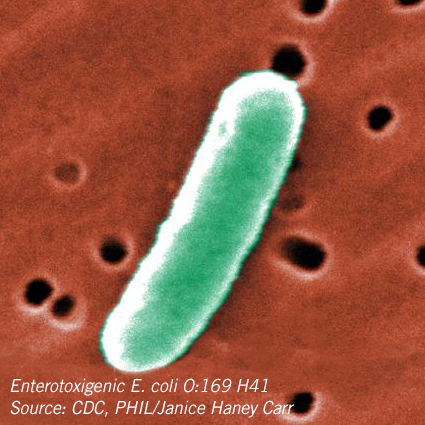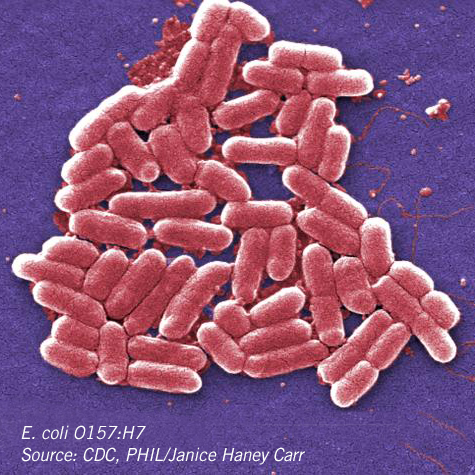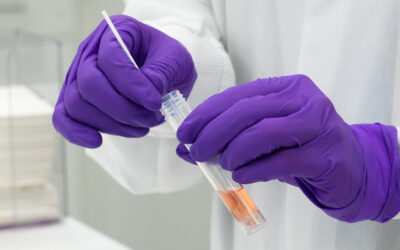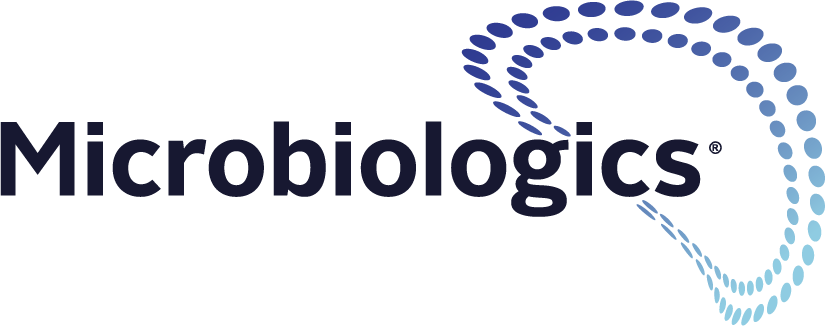 Escherichia coli may be the world’s most recognized bacterial species, but this one species varies tremendously. E. coli is found almost everywhere; from soil to raw meat to human intestines. There are plenty of good E. coli strains such as those that assist in food digestion in the human intestines. However, there are also a number of harmful E. coli strains that cause urinary tract infections, meningitis, and intestinal infections.
Escherichia coli may be the world’s most recognized bacterial species, but this one species varies tremendously. E. coli is found almost everywhere; from soil to raw meat to human intestines. There are plenty of good E. coli strains such as those that assist in food digestion in the human intestines. However, there are also a number of harmful E. coli strains that cause urinary tract infections, meningitis, and intestinal infections.
In recent years, there have been a number of E. coli outbreaks in the food industry. These outbreaks typically cause intestinal infections which can be severe or even fatal. In this post we will outline the who’s who of E. coli strains and identify why some strains are more deadly than others.
We often associate E. coli with intestinal infections. The most common symptom of an intestinal E. coli infection is diarrhea. The severity and characteristics of the symptoms can assist in classifying which type of E. coli strain is present.
Intestinal E. coli infections are typically classified into five categories:
- Enterotoxigenic (ETEC)
- Enteropathogenic (EPEC)
- Enteroinvasive (EIEC)
- Enterohemorrhagic (EHEC)
- Enteroaggregative (EAEC)
Each type of E. coli strain varies in its transmission and method of infection. EHEC E. coli strains are the most life threatening due to their shiga-toxin production.
 Enterotoxigenic (ETEC) Strains
Enterotoxigenic (ETEC) Strains
ETEC E. coli strains are the most common cause of traveler’s diarrhea when travelling to developing countries. It is also a leading cause of infant infection and death in these countries. Adults living in endemic areas often develop immunity to these strains. The infectious dose for these strains is typically high and transmitted from contaminated food and water. These strains are limited to humans and not typically found in animals.
ETEC E. coli strains have colonization factor antigens (CFA) to assist in adherence to intestinal cells and delivery of toxins. These strains produce heat-labile toxins (LT) and/or heat-stable toxins (ST), which facilitate the release of water and electrolytes from intestinal cells contributing to the development of watery-diarrhea symptoms.
Enteropathogenic (EPEC) Strains
EPEC strains are rare in industrialized nations, but still a common cause of infant diarrhea in developing nations. It is thought to be spread via fecal-oral transmission or contaminated water. Immunity and infectious dosage has been difficult to determine. These strains are less likely to cause traveler’s diarrhea, and have been found on objects near infected small children indicating a low infectious dose for infants.
EPEC strains do not product LT or ST toxins, instead they attach to the intestinal cell wall to form a micro-colony, which alters the intestinal cells. This process is also referred to as the attachment and effacing (AE) lesion. The actual cause of watery-diarrhea is unknown, but likely due to bacterial invasion of host cells and disruption to intestinal absorption.
 Enteroinvasive (EIEC) Strains
Enteroinvasive (EIEC) Strains
Enteroinvasive (EIEC) strains are very similar to Shigella in regards to their disease causing mechanisms and symptoms of dysentery. EIEC strains enter intestinal cells and multiply, eventually causing cell death, inflammation, and ulcers.
Infections are typically limited to children in developing regions; outbreaks in industrialized nations are usually linked to contaminated food or water. EIEC species have only been found in humans and a high infectious dose is typically required to cause illness.
Enterohemorrhagic (EHEC) Strains
Enterohemorrhagic (EHEC) strains are the most publically recognized strains and include E. coli O157:H7 as well as Shiga-toxin producing E. coli. These strains have a very low infectious dose and are transmitted through infected food especially meat and unpasteurized beverages.
These infections are commonly observed in developed nations where contaminated meat is processed quickly with uninfected meat and then shipped rapidly across the country. EHEC strains differ from other E. coli strains in that they primarily target the colon and produce Shiga-toxins as well as AE lesions. The AE lesions directly contribute to symptoms such as non-bloody diarrhea.
 Shiga-toxins enter eukaryotic cells in the intestines and inhibit protein synthesis, resulting in cell death. The Shiga-toxins cause inflammation, thrombosis, and bloody diarrhea. These symptoms can cause the kidneys to become clogged with red blood cells resulting in kidney failure. This condition is referred to as Hemolytic Uremic Syndrome (HUS), and is life threatening.
Shiga-toxins enter eukaryotic cells in the intestines and inhibit protein synthesis, resulting in cell death. The Shiga-toxins cause inflammation, thrombosis, and bloody diarrhea. These symptoms can cause the kidneys to become clogged with red blood cells resulting in kidney failure. This condition is referred to as Hemolytic Uremic Syndrome (HUS), and is life threatening.
E. coli O157:H7 strains can be differentiated from other E. coli strains by the use of MacConkey Sorbitol agar. E. coli O157:H7 strains typically do not ferment sorbitol, and therefore give colorless colonies. This is a quick and cost effective measure to detect E. coli O157:H7 infections. These samples should be confirmed by the use of O157 antisera or other test methods.
Enteroaggregative (EAEC) Strains
Enteroaggregative (EAEC) strains are commonly found in children in developing countries. The exact mechanisms of these strains have yet to be fully understood, however it is thought that the E. coli cells are able to adhere to intestinal cells and create a biofilm. Lesions and inflammation are typically not present. Symptoms include watery and mucoid diarrhea which may last for weeks.
Is your laboratory looking to test for specific E. coli strains? Microbiologics offers over 45 different strains of E. coli including O157:H7, O104:H4 and the Big 6 Shiga toxin-producing strains. Visit our website to find the right strain and format for your lab.





Very interesting and informative article. Thank you.
Which e-coli bacteria classification produces ESBL? And what does a lab need to do to be accurate in their diagnostic methodology?
Hello Nancy,
We have a technical document called Antimicrobial Resistance Strains you can download here: http://microbiologics.com/Support-Center/Technical-Information-Bulletins. This may help answer some of your questions regarding ESBL strains. As for methodology, we would suggest you consult your regulatory agency with any questions or concerns. You’re also welcome to reach out to our Technical Support team with questions about our products and services: techsupport@microbiologics.com or 320-229-7045.
Thank you
Hallo mam which strain of E.coli harpic protin production which is use in agriculture kindly suggested.
Thanks
Sunil patidar
Sunil – we suggest contacting the agriculture regulatory agency in your country (such as the USDA in the United States) for guidance on the suggested E. coli strains to use for your testing.
Can we call an intestinal infection , Traveler’s Diarrhoea if the causative pathogen was picked up by the traveler in a developed country rather than a developing country.
My impression is that TD will nee a term used only if the pathogen was picked up from a developing country .Term used for the infection picked up in the developed country will be Food poisoning rather than .TD as causative factor in this situation will be different.
Am I correct
Samia – this description of travelers’ diarrhea from the CDC may be of interest to you: https://wwwnc.cdc.gov/travel/page/travelers-diarrhea
Your article states, “There are plenty of good E. coli strains such as those that assist in food digestion in the human intestines. “. What are the names of the E.coli strands that are good and the ones which are harmless (i’m looking for a list).
Ajay – this is a helpful article that lists pathogenic serotypes and a few non-pathogenic serotypes: http://citeseerx.ist.psu.edu/viewdoc/download?doi=10.1.1.832.4743&rep=rep1&type=pdf
Thansk for this article, it helps me a lot
Good day.
I want to find out can E-coli build up in the human body and come forward later in life? I have a friend that’s in the hospital and the doctors say that it is e-coli that build up in his body all these years that’s causing him his illness! Is that true. He has Aids for a long time. He also have horses that he looks after and his dogs at home. All I want to know can e-coli build up in humans and show symptoms later in life?
From my experience yes. Because if not diagnosed and treated properly it just continues to grow. If been on different antibiotics it can make it worse. Mine is in my ears and they keep treating it with oral antibiotics and come to find out it’s resistance to them now is astounding. I have to have IV meds to fix it.
Good article BUT what are some of those Harmless strains of E. coli
Escherichia coli, better known as E. coli, are a common and diverse group of bacteria found in food, the environment, and in the intestines of both people and certain warm-blooded animals. While E. coli is most often associated with gastrointestinal infections and outbreaks of food poisoning, the bacteria impacts other areas of the body as well. Common Infections are Gastrointestinal & Urinary Tract. Common symptoms are Nausea, Dehydration due to diarrhea, Severe stomach cramps, Fatigue & Watery diarrhea. You can also refer to this article which states all the necessary details about e coil https://www.everydayhealth.com/e-coli/